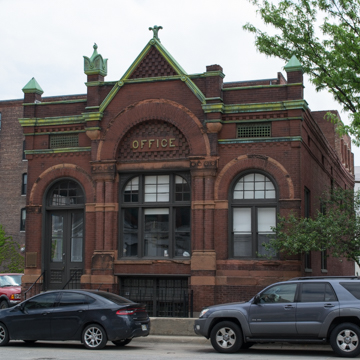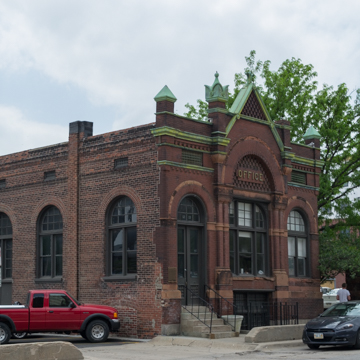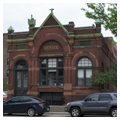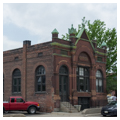You are here
Anheuser Busch Office Building
Located in the Omaha Railroad Commerce Historic District bordering the southeast edge of downtown, the Anheuser-Busch Office Building is the only remaining structure of a beer depot that once comprised the largest brewing operation in Omaha. At the time breweries were one of ten major manufacturing industries in the city. The beer depot was a branch agency for the Anheuser-Busch Brewing Association of St. Louis. Beer was shipped by rail from St. Louis to Omaha then bottled and distributed throughout a region that included all of Nebraska and adjacent areas of Iowa, South Dakota, and Wyoming.
The depot was designed by Henry Voss, a native of Germany who was already a practicing architect when he immigrated to the United States in 1871. Voss arrived in Omaha two years later, making breweries a focus of his practice, and eventually completed plans for all of Omaha’s major brewing companies.
The original complex was comprised of three masonry structures: an office, beer vault/ice house, and stable. A wood-frame wagon shed connected the beer vault and stable. All of the buildings were organized around a small courtyard that opened onto Jones Street.
The office building is rectangular in plan with load-bearing red brick walls over a raised basement. One of the most elaborate examples of the Romanesque Revival style in the city, the building features a rich variety of materials, textures, and colors. The front facade is a three-part composition centered around a slightly projecting middle section with a large round-arched window opening supported by paired flanking columns and capped with a pediment. A smaller round-arched opening on either side completes the near-symmetrical facade. Elaborate and polychromatic ornamentation results from the use of varied brick coursing, cut stone trim, and metal coping, cornice, and finials. The east elevation, which once bordered the courtyard, is more visually reserved but it, too, has round-arched openings in its brick-bearing wall.
The Anheuser-Busch operation continued in Omaha from about 1874 until Prohibition was approved in 1919. For the next four decades it was used by a number of companies as a warehouse and office space. During the 1960s and 1970s, it served as a private residence. As urban revitalization in Omaha spread outward from the Old Market area, the building was renovated and fully restored in 1989. Today, it continues to serve as office space.
References
Chatfield, Penelope, and David Murphy, “Anheuser Busch Beer Depot,” Douglas County, Nebraska. National Register of Historic Places Inventory-Nomination Form, 1978. National Park Service, U.S. Department of the Interior, Washington, DC. http://www.nebraskahistory.org/histpres/nebraska/douglas/DO09-Anheuser-Busch-Depot.pdf.
Writing Credits
If SAH Archipedia has been useful to you, please consider supporting it.
SAH Archipedia tells the story of the United States through its buildings, landscapes, and cities. This freely available resource empowers the public with authoritative knowledge that deepens their understanding and appreciation of the built environment. But the Society of Architectural Historians, which created SAH Archipedia with University of Virginia Press, needs your support to maintain the high-caliber research, writing, photography, cartography, editing, design, and programming that make SAH Archipedia a trusted online resource available to all who value the history of place, heritage tourism, and learning.

















